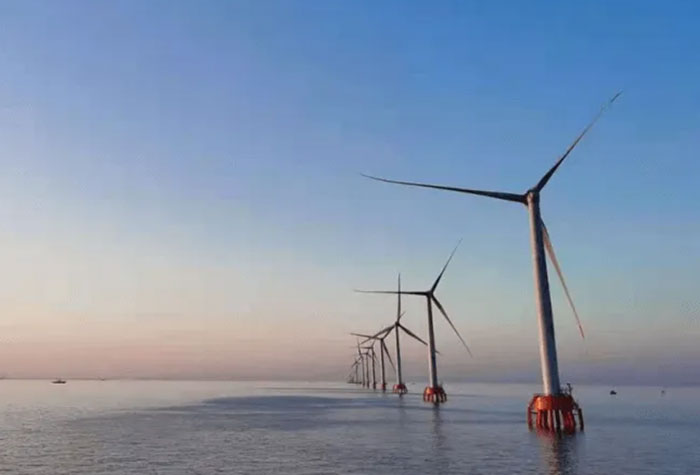Frequent typhoons are a double-edged sword for offshore wind farms. A weaker typhoon can increase power generation and improve the economic benefits of the wind farm. However, a stronger typhoon will bring great harm to the wind farm. In order to better develop and utilize wind energy resources in offshore areas, how to reduce the damage caused by typhoons to wind farms will be an urgent issue to be considered in the development of offshore wind power.
How to Design a Typhoon-proof Wind Turbine?

Avoiding Overall Overturning
The typhoon-proof wind turbine should avoid the subversive damage of overall overturning. In order to effectively avoid subversive damage, structural typhoon-proof design should be carried out. According to the time history of the typhoon wind speed measured on site, the random dynamic response analysis of the structure is carried out to obtain a more accurate dynamic amplification factor. If the conditions are not met, the strong non-stationarity of the typhoon wind speed should be considered, and a method for determining the dynamic amplification factor suitable for the typhoon wind speed should be proposed. Generally, the safety factors of foundation, tower, nacelle, hub, and blades decrease in turn. By improving the safety factor of the supporting structure (tower and foundation), the probability of tower damage and overall overturning is reduced, so as to avoid huge losses caused by overturning damage.
Coping with Transient Wind Speeds
The instantaneous change of wind direction has an important influence on the safety of wind turbines. When a typhoon passes, it usually brings higher wind speed, which is beneficial to the power generation operation of offshore wind turbines, but the large-scale changes in wind direction bring difficulties to the operation of offshore wind turbines. Therefore, when designing an offshore wind turbine, the wind direction, turbulence, and control parameters such as pitch and yaw should be considered in combination with the operating state of the wind turbine to conduct a comprehensive analysis.
Blade Optimum Design
Among the damaged blades in various wind farms, most of the blades are broken at the root, and some are partially detached. In order to reduce the damage to the blades caused by the typhoon, the following measures can be taken: for the problem of insufficient bonding strength between the main beam and the wing shell, adopt the addition of riveting devices to the connection of the rear wing of the blade; improve the local structure of the blade; In the process, the detection of local defects of the blade should be further strengthened to enhance the ability of the blade to resist typhoon; the material of the blade should be improved to improve its ultimate strength and anti-fatigue strength counting ability.
Intelligent Yaw Mechanism
Develop an intelligent yaw mechanism, which can control the yaw of the nacelle to reduce the wind force on the unit even if the unit stops running, so that the unit can be designed to withstand strong platforms. Wind At present, Japan has designed an intelligent yaw control device to reduce the crew load increased by strong winds. The application of the device can reduce the blade and tower loads by 25% and 30% respectively when strong winds come, thereby improving the reliability of the wind turbine.
Wind Farm Construction and Maintenance

Reasonable Location
The reasonable location of the wind field should avoid areas with high turbulence intensity such as steep hills, many obstacles, and severely uneven terrain.
Wind Farm Construction
When building wind farms in typhoon areas, it is recommended to use buried cables and install backup diesel generators, so as to maintain the yaw capability of the wind turbines in the event of a typhoon and power outages, and reduce risks by maintaining the basic survival power of the wind turbines.
Feathering
When a typhoon comes, keep the wind turbine in a stalling and feathering state, but the yaw suspension state is the key to preventing blade damage. When a typhoon strikes, the fan can actively yaw and feather the front wind, which can greatly reduce the probability of blade damage; maintain the yaw function of the fan, so that it can always be aligned with the typhoon wind direction, so that the blades are feathered with the least force state, which is key to reducing the risk of leaf damage.
